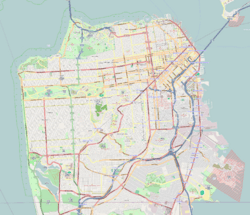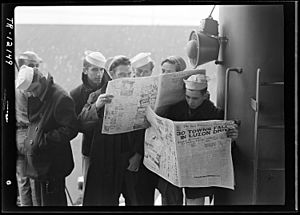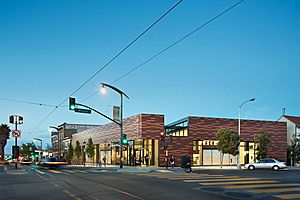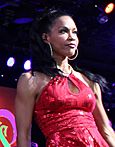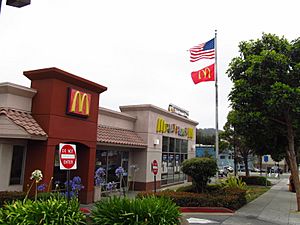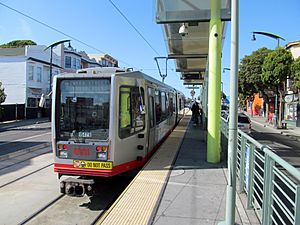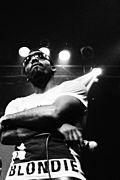Bayview–Hunters Point, San Francisco facts for kids
Quick facts for kids
Bayview–Hunters Point
|
|
|---|---|
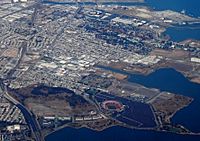
A bird's-eye view of the Bayview–Hunters Point neighborhood of San Francisco. Candlestick Park, demolished in 2015, is in the foreground
|
|
| Nicknames:
Beacon Point & Conch Point (1700s), Potrero Viejo (1830s–1860s), Butchertown (1830s–1960s), Southern San Francisco (1839; on some maps), Hunters Point Shipyard (1869–1939), Railroad Avenue (former name for "3rd Street"; 1886–1910), Bayview-Hunter's Point (1960s–present), Bayview Heights ("redevelopment" name; 2010s–present) – The Point (nickname), The Port (nickname), The Yard (nickname ref to the Shipyard), The Bayview (nickname), HP (nickname), District 10 (in politics), Bayview-HP (shortened in media), BVHP, BHP (abbreviated on paper), Bayview-Hunter's Point, San Francisco (to avoid confusion with other neighborhoods with the name "Bayview"), Bayview, SF (seen on tech apps)
|
|
| Country | |
| State | |
| City-county | San Francisco |
| Area | |
| • Total | 3.95 sq mi (10.2 km2) |
| Population
(2010)
|
|
| • Total | 35,890 |
| Time zone | UTC−8 (Pacific) |
| • Summer (DST) | UTC−7 (PDT) |
| ZIP Code |
94124
|
| Area codes | 415/628 |
Bayview–Hunters Point is a neighborhood in San Francisco, California. It is located in the southeastern part of the city. The area combines two neighborhoods: Bayview and Hunters Point.
The Hunters Point Naval Shipyard, which is no longer in use, is located here. Candlestick Park, a famous stadium, was also on its southern edge until it was taken down in 2015. Because of its location in the southeast, these two neighborhoods are often talked about together. Bayview–Hunters Point has been called San Francisco's "Most Isolated Neighborhood."
In recent years, there have been many projects to improve the neighborhood. These plans aim to build new homes, shops, and parks. They also focus on cleaning up the former Navy Shipyard area.
Contents
- Exploring Bayview–Hunters Point's Location
- A Look at Bayview–Hunters Point's Past
- Learning and Schools in Bayview
- Who Lives in Bayview–Hunters Point?
- Challenges and Community Efforts
- Arts and Technology in Bayview
- Famous Places and Fun Spots
- Businesses and Services
- Getting Around Bayview–Hunters Point
- Bayview–Hunters Point in Pop Culture
- Famous People from Bayview–Hunters Point
Exploring Bayview–Hunters Point's Location
The Bayview–Hunters Point area is in the southeastern part of San Francisco. It stretches along Third Street. This main road goes from India Basin to Candlestick Point.
The neighborhood has clear borders. To the north is Cesar Chavez Boulevard. To the west is U.S. Highway 101. Bayview Hill is to the south. The San Francisco Bay is to the east. Inside this area, you'll find smaller neighborhoods like Hunters Point and India Basin. The southern half of the neighborhood includes the Candlestick Point State Recreation Area.
A Look at Bayview–Hunters Point's Past
The Ohlone People: First Inhabitants

Before Spanish missionaries arrived in the 1700s, the area was mostly wetlands and small hills. The Yelamu and Ramaytush Ohlone people lived here for thousands of years. They had sacred burial grounds called "shell mounds." The Spanish later called them Costanoans, meaning "coast dwellers."
In 1775, Juan Bautista Aguirre explored the land. He named it La Punta Concha (Conch Point). Later, it was called Beacon Point. For many years, the land was used for cattle by the Franciscan friars from Mission Dolores.

In 1839, the area became part of a large Mexican land grant. This land was given to José Cornelio Bernal. After the California Gold Rush, Bernal sold the land in 1849 for new buildings. Three brothers, John, Phillip, and Robert Hunter, built their homes and a dairy farm here. This is how the name Hunters Point came to be.
The Bayview–Hunters Point area was sometimes called "Southern San Francisco" on old maps. This is different from the city of South San Francisco further south.
Growing Industries: Butchertown and Power Plants
In 1868, San Francisco made a rule against slaughtering animals in the city center. So, butchers set up a "butchers reservation" in Bayview. Soon, 18 slaughterhouses were in the area. They also had places for tanning leather and making fertilizer. This area became known as Butchertown.
By 1888, the city started to control the slaughterhouses. This was due to health concerns and a need for better cleanliness. The butcher industry slowly faded after the 1906 San Francisco earthquake. The last slaughterhouse closed in 1971.
From 1929 to 2006, Bayview–Hunters Point had power plants. These plants burned coal and oil to make electricity for San Francisco. Smoke and waste from these plants caused health and environmental problems. In 1994, a new power plant was proposed. But community groups protested, and the old plant was eventually shut down. In 2008, the Hunters Point Power Plant was taken down. The land was cleaned up for future homes.
The Shrimping Industry
From the 1870s to the 1930s, Chinese immigrants started many shrimping businesses. By the 1930s, there were about a dozen shrimp operations in Bayview. In 1939, the U.S. Navy took over the land for the Naval Shipyard. The Health Department then burned down the shacks and docks. These had been home to a small village of fishermen and their families.
The Shipyard: A Center of Activity
Shipbuilding became very important in Bayview–Hunters Point in 1867. The first permanent drydock on the Pacific coast was built here. The Hunters Point Dry Docks grew larger over time. They could hold the biggest ships that could fit through the Panama Canal.
During World War I, more Navy ships were built here. In 1940, the U.S. Navy bought land to create the San Francisco Naval Shipyard. Many African Americans moved to the neighborhood for jobs during the Great Migration. This was especially true after World War II. The population of Bayview grew four times between 1940 and 1950. At its busiest, the shipyard employed 17,000 people.
The shipyard was also where parts of the first atomic bomb were loaded onto a ship in 1945. This bomb was later used on Japan.
Until 1969, the Hunters Point shipyard was home to the Naval Radiological Defense Laboratory (NRDL). This lab cleaned ships exposed to atomic weapons tests. It also studied how radiation affected materials and living things. This caused a lot of radiation pollution in the area. In 1989, the base was named a Superfund site. This meant it needed a long-term cleanup. The Navy closed the shipyard in 1994.
Protecting Historical Sites and the Environment
In 2010, representatives of the Ohlone people wrote to the mayor of San Francisco. They asked to protect Ohlone historical sites at the Candlestick Point–Hunters Point shipyard. They believed these sites were important burial or ceremonial grounds. They also wanted to protect the community's health and the environment.
Community Growth and Changes
From the late 1800s to the early 1900s, many Italian, Maltese, and Portuguese families moved to Bayview. They built homes and farmed.
African-American Community Development
In the 1930s, the neighborhood had a mix of people and incomes. Reports from this time described the area as having lower-income residents. These were factory workers or "white collar" workers who had jobs nearby.
In 1937, a map was made to decide which San Francisco neighborhoods would get loans for homes. Two areas in Bayview Hunters Point received the lowest possible grades. This made it hard for the area to recover from the Great Depression. It also made it difficult for people to buy new homes.
In 1942, the government built temporary homes for shipyard workers' families. Hunters Point became one of the most diverse areas in the city. However, over time, racial differences in housing, jobs, and policing shaped the area.
By the 1950s and 60s, Bayview was mostly an African-American neighborhood. It had a movie theater, a library, and youth sports teams.
Challenges and Changes in the 1960s
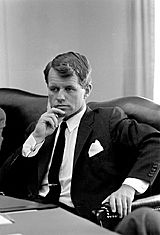
By the 1960s, Bayview and Hunters Point were mainly home to African Americans and other minority groups. The area was separated from the rest of San Francisco. Problems included pollution, poor housing, old buildings, few jobs, and racial unfairness. In 1963, writer James Baldwin made a film called "Take This Hammer." He said, "this is the San Francisco America pretends does not exist."
In 1967, U.S. Senators Robert F. Kennedy, George Murphy, and Joseph S. Clark visited the area. They spoke with activist Ruth Williams about the problems. When the naval shipyard closed in the 1970s and 1980s, many jobs were lost. This led to more unemployment and poverty.
New building projects started in the 1990s and 2000s to improve the area. Housing prices went up a lot between 1996 and 2008. Many long-time African American residents moved away. They either couldn't afford to live there anymore or sold their homes for high prices. The number of Black people in Bayview–Hunters Point went from 65% in 1990 to a minority in 2000. However, in 2010, African Americans were still the largest ethnic group in Bayview.
In the 2000s, several projects focused on improving the neighborhood. The MUNI T-Third Street light-rail project was built. This replaced an old bus line with new stations and streetlights. A company called Lennar proposed a large project. It included building 10,500 homes and shops on the old Hunters Point Naval Shipyard. There were also plans for a new football stadium for the San Francisco 49ers. But the 49ers decided to build their stadium in Santa Clara in 2006.
Learning and Schools in Bayview

Bayview has more elementary school-aged students than any other neighborhood in San Francisco. However, many students choose to go to schools outside the neighborhood. In 2016, the Golden State Warriors Community Foundation donated a new basketball court to Willie L. Brown Middle School.
Bayview–Hunters Point has several elementary and middle schools. It also has one high school and two college campuses.
Elementary and Early Learning Schools
- Whitney Young Development Center (now FACES SF)
- Erikson School (K)
- Frandelja Enrichment Center Fairfax
- Frandelja Enrichment center Gilman
- Success Daycare
- Bret Harte elementary school
- George Washington Carver elementary school
- Hunters Point Number Two School
- Charles R. Drew Elementary School
- Leola M. Havard Early Education School
- Malcolm X Academy
Middle and Junior High Schools
- Joshua Marie Cameron Academy
- KIPP Bayview Academy
- KIPP San Francisco College Preparatory
- Willie L. Brown Jr. Middle School
- One Purpose School (K–12)
- Thurgood Marshall High School
- Rise University Preparatory
High Schools
- One Purpose School (K–12)
- Thurgood Marshall High School
- Joshua Marie Cameron Academy (7–12)
- Coming Of Age Christian Academy (K–12)
Colleges in the Area
- City College of San Francisco—Evans Center
- City College of San Francisco—Oakdale Center
After School Programs
- YMCA—Bayview
- College Track
- Young Community Developers (YCD)
- Faces SF—Bayview
In 2004, Bill Cosby visited Charles Drew Elementary. He talked about the importance of parents being involved in their children's education. He said, "Parents are 99 percent. School districts don't parent. They teach."
In 2017, a group called Friends of the Children received a large grant. This allowed them to expand their mentorship program into Bayview and Hunters Point. They provide long-term mentors for children from kindergarten through high school.
Who Lives in Bayview–Hunters Point?
According to the 2010 U.S. Census, Bayview–Hunters Point had 33,996 people. The population included 33.7% African-American, 30.7% Asian, and 12.1% White. About 24.9% of the population was of Hispanic or Latino background.
Bayview–Hunters Point had the highest percentage of African Americans among San Francisco neighborhoods. However, the percentage of African Americans in Bayview decreased from 48% in 2000 to 33.7% in 2010. At the same time, the percentage of Asian and White residents increased.
In 2009, the average home value was about $586,201. By 2011, it had dropped to around $367,000. This was the lowest in any San Francisco ZIP code. The average household income in 2009 was $43,155. Rent prices in Bayview are lower than in other parts of San Francisco.
Hunters Point has been identified as an "extreme poverty" neighborhood. This means over 40% of residents live below the poverty line. Nearly 12% of people in Bayview receive public assistance. This is three times the national average.
Challenges and Community Efforts
Addressing Neighborhood Challenges
Since the 1960s, Bayview–Hunters Point has faced many challenges. It has been called one of the most economically disadvantaged areas in San Francisco. This is due to a history of working-class people living on the city's edge. It also has high levels of pollution, closed industries, and old buildings. These issues have led to high unemployment, poverty, illness, and crime.
Efforts to help the area include building the Third Street light-rail line. The Southeast Community Facility was also created to address environmental unfairness. There are also programs to help local residents get jobs on public projects. Community groups like the Quesada Gardens Initiative work to improve the neighborhood. They aim to keep its diversity and encourage long-time residents to invest in their community.
The pollution from the Hunter's Point shipyard has been linked to higher rates of asthma and other breathing problems. These health issues, along with rising housing costs, have led some community members to describe the situation as very serious.
In 2011, The New York Times called Bayview "one of the city's most violent" neighborhoods. Police have focused on removing guns from the streets. This led to a 20% drop in major crimes between 2010 and 2011.
Understanding Food Access
The USDA defines a food desert as an area where it's hard to find healthy, affordable food. These areas often have high poverty rates. In a food desert, a third of residents live more than a mile from a supermarket or farmers market. African Americans are much more likely to live in communities without a full-service supermarket.
Until the late 2000s, the neighborhood had no major supermarkets. In 2011, an official called the area a "food desert." A large part of southeastern San Francisco is a recognized food desert.
In 2011, the UK supermarket chain Tesco opened a Fresh & Easy store in Bayview–Hunters Point. This was the first new grocery store in 20 years. However, this store later closed. Another grocery store, Duc Loi’s Pantry, opened in 2016 but also closed in 2019. Residents felt that both stores did not connect enough with the local community.
In 2021, plans were announced for a "food empowerment market." This market would distribute donated or low-cost food. People who qualify could choose their own groceries and pay a reduced price or get them for free. The market would also have a community kitchen for cooking classes. It would offer free delivery for seniors and people with mobility issues.
Bayview-Hunters Point has the highest rates of obesity in San Francisco. Less than five percent of food sold in the neighborhood is fresh produce. Many residents, especially seniors, struggle to find enough food. This is called food insecurity.
Community Action and Activism
In April 1968, baseball star Willie Mays and Osceola Washington worked together. They raised money for youth activities in Bayview-Hunters Point.
Many community groups work to improve the area. These include the India Basin Neighborhood Association and the Quesada Gardens Initiative. They work with residents and city groups to strengthen the community. They also fight for environmental justice.
Community gardening, art, and social history are popular. The Quesada Gardens Initiative has created many community gardens. These gardens have turned dangerous areas into safe, beautiful spaces. They are now a destination for residents and visitors.
Neighborhood Improvements and Redevelopment
The Linda Brooks-Burton Library
The first Bayview Branch Library opened in 1927. In 1969, a new brick building was built. It was funded by a gift from Anna E. Waden.
Linda Brooks Burton was a librarian at the Bayview branch for 15 years. She was a key person behind the new library building project. Linda also helped start the African American History Preservation Project in 2007. This project created digital records about the history of Black migration to the Hunters Point Shipyard. She also co-founded the Bayview Footprints Network of Community Building Groups.
Linda Brooks Burton passed away in 2013. The Anna E. Waden Library was renamed in her honor in 2015. The building's design is inspired by African textile patterns. It also features West African Adinkra symbols in its outdoor area.
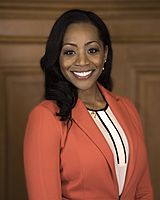
The Hunters Point Naval Shipyard is a large redevelopment project. It aims to build 10,500 homes, shops, and parks. Developers said the project would create many jobs.
However, there were concerns about the project. These included cleaning up toxic waste, the environmental impact of building on the waterfront, and the possible displacement of residents. In 2016, the company in charge of cleaning up toxic material was accused of carelessness. This caused the Navy to pause transferring the land for redevelopment.
"I am Bayview" Campaign
The "I am Bayview" campaign was created to show the community's pride. It featured photos of residents to highlight the issue of gentrification. The goal was to encourage new people moving in to get to know the existing community. Posters with these images were put up along Third Street.
Pan-African Flags
In 2017, Supervisor Malia Cohen and the city painted Third Street poles with red, black, and green stripes. This was done to honor Black History Month and the heritage of Black residents in Bayview–Hunters Point. Cohen said it was meant to be a cultural marker for the Bayview. Many neighbors were happy to see this tribute to the African-American community.
Arts and Technology in Bayview
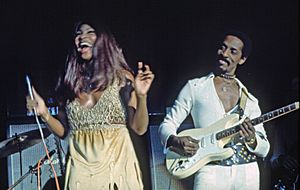
Bayview has been a center for arts since 1957 and technology since 1984. Famous acts like Ike & Tina Turner performed at the former Club Long Island.
METRAe BaHu Gallery
From 1987 to 1998, BaHu Gallery was a free art space in Bayview-Hunters Point. It provided display areas for many artists. The first show in 1984 featured poet Jack Micheline.
Sculptures and Murals: Art in Public Spaces
There are 18 sculptures recorded across the Bayview neighborhood. These include "Invocation" by Pepe Ozan and "Time to Dream" by Amana Johnson.
The Bayview also has many murals. In the 1980s, Brooke Fancher painted "Tazuri Watu" on a building at 3rd and Palou. This mural was restored in 2018.
Other murals include a Malcolm X mural by Refa-1 and "The Fire Next Time" by Dewey Crumpler. Crumpler's mural features figures like Harriet Tubman and Muhammad Ali. On Egbert Street, a mural by Chris "Royal Dog" Chanyang Shim shows a young African-American girl in a Korean hanbok robe.
Along the Third Street corridor, you can find many more murals. These include pieces featuring President Obama and Michelle Obama, and "Don't Dump Oil." The "Bayview Rise" is an illuminated mural on Pier 92. It shows images that reflect the neighborhood's changing economy and community.

Technology and Media
Kimberly Bryant founded Black Girls Code in Bayview in 2011. This group teaches technology to African-American girls.
In 2012, Leila Janah started Samaschool in Bayview-Hunters Point. It trained students for digital work.
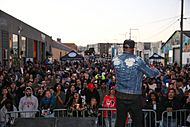
Singer-songwriter Michael Franti worked with Beats for a Better Future. They created a music studio for young people in Bayview-Hunters Point.
BAYCAT Studio (Bayview Hunters Point Center for Arts and Technology) helps young people learn about multimedia production. They aim to diversify the creative industry.
Imprint City and BayviewLIVE
Imprint City is a non-profit organization in Bayview. It hosts arts and culture events to improve the community. The BayviewLIVE Festival celebrates urban artists. Past performers include Talib Kweli and Busta Rhymes.
Dance
The Hunters Point Shipyard is home to "The Point," a large artist colony. Zaccho Dance Theatre has been a professional dance company here since 1990. They have performed shows about the history of Bayview-Hunter's Point through dance.
Famous Places and Fun Spots
Historic Buildings to See
Four historic buildings in the district are San Francisco Designated Landmarks.
The Bayview Opera House was built in 1888. It is a California landmark. It has hosted many events, including plays and film screenings. Famous actors like Frances McDormand have performed there.
The Albion Brewery was built in 1870. It was listed as a San Francisco Designated Landmark in 1974.
Quinn House (1875) and Sylvester House (1870) are also San Francisco Designated Landmarks.
- Historic buildings
-
The Bayview Opera House (previously South San Francisco Opera House) built in 1888.
-
Albion Brewery and Hunters Point Springs at 881 Innes Avenue, built in 1870.
Recreation and Parks
Candlestick Park: A Place for Concerts
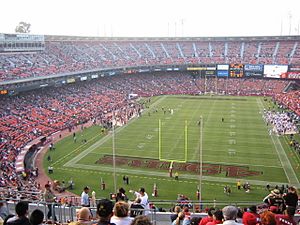
Before it was taken down, Candlestick Park hosted many famous performers. In 2013, Justin Timberlake and Jay-Z performed there. Other acts included The Beatles, The Rolling Stones, and Paul McCartney. Pope John Paul II also held a Mass there in 1987.
Martin Luther King Jr Memorial Swimming Pool
In 1968, actor Steve McQueen and Mayor Joseph Alioto attended the groundbreaking for the Martin Luther King Jr. Memorial swimming pool. Warner Bros Studios, the makers of McQueen's film 'Bullitt', donated money for the pool.
Parks for Fun and Nature
Bayview has three large parks. Bayview Park offers great views of the city. It also has the K.C. Jones playground and the Martin Luther King Jr swimming pool. The Candlestick Point State Recreation Area is popular for kayaking and windsurfing.
Heron's Head Park is home to a growing population of Ridgway's rails. It also has the award-winning Heron's Head Eco Center.
The Quesada Garden is a community open space on Quesada Avenue. It was started by retired residents Karl Paige and Annette Young Smith in 2002. They began planting flowers and vegetables, and neighbors quickly joined in. This area has become a beautiful spot for art and community building.
In 2022, plans were announced for a new landmark at India Basin. It will be called "India Basin Waterfront Park."
"Ghost Streets"
Bayview and Hunter's Point have many "ghost streets." These are long roads that have been closed off since the 1940s. Examples include Westbrook and Hudson Street. These areas are now home to native plants and insects.
"All My Uso's" BBQ
Every year, the Polynesian and Samoan community hosts a BBQ called "All My Uso's" (AMU) at Gilman Park. This event celebrates their heritage and brings people together. It honors founders who have passed away. Kids can get free haircuts and face painting. AMU is a non-profit group that promotes cultural identity and diversity.
Businesses and Services
Along the Third Street corridor, you can find various businesses. There is a McDonald's on Wallace Street and a Starbucks coffee in the Bayview plaza.
Speakeasy Brewery offers tours and live music. Restaurants include Chef Eskender Aseged's Radio Africa & Kitchen and Old Skool Cafe. The San Francisco Wholesale Produce Market has been a center for food distribution since 1963.
After 60 years, the historic Sam Jordan's Bar and Grill closed in 2019. It was the oldest African-American bar in San Francisco. The block was renamed "Sam Jordan's Way" in his honor.
Mother Brown's Dining Room
Mother Brown's Dining Room provides two meals a day to homeless people in the Bayview District.
Post Offices
Bayview has two major USPS offices. One of the largest is on Evans Street. A smaller branch is on Williams Street.
Getting Around Bayview–Hunters Point
The Bayview area is served by the Muni bus and light rail system. The Caltrain commuter rail service runs through the eastern part of the neighborhood. The area is close to major highways, making it easy to get to downtown San Francisco and SFO.
In 2007, the T-Third Street line opened. This light rail line connected Bayview-Hunters Point to downtown San Francisco. This connection has also contributed to rising property values in the area.
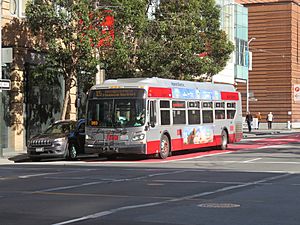
Muni transit lines that run through the Bayview include:
Active Lines
- T Third Street
- 23 Monterey
- 54 Felton
- 24 Divisadero
- T Owl
- 9 San Bruno
- 9R San Bruno Rapid
- 10 Townsend
- 15 Bayview-Hunters Point Express
- 19 Polk
- 29 Sunset
- 33 Ashbury/18th Street
- 44 O'Shaughnessy
- 48 Quintara/24th Street
- 54 Felton
- 56 Rutland
- 67 Bernal Heights
- 90 San Bruno Owl
- 91 3rd Street/19th Avenue Owl.
Bayview–Hunters Point in Pop Culture

Print Media
- The San Francisco Bay View is an African-American newspaper located on Third Street.
- Thrasher magazine also has its headquarters in Bayview.
- The Examiner newspaper is printed out of Bayview.
- The Sun-Reporter, a historic weekly newspaper, operates from Bayview.
Radio
- Radio station KYA broadcast from Bayview Park until 1934.
- KALW 91.7 FM tells stories about the people in San Francisco's Bayview neighborhood.
Film and TV Appearances
Full-Length Films
- The Midnight Story (1957) had scenes filmed in Bayview.
- The Hunters Point Shipyard appeared in Alfred Hitchcock's Vertigo (1958).
- Experiment in Terror (1962) had a scene at Candlestick Park.
- Take This Hammer (1963) followed James Baldwin meeting with the local African-American community.
- Bullitt (1968) featured scenes filmed in Bayview.
- Freebie and the Bean (1974) was filmed at Candlestick Park.
- The Fan (1996) was also filmed in Bayview.
- The Spike Lee film, Sucker Free City (2004), used Hunter's Point as a setting.
- The Pursuit of Happyness (2006) had a scene at Candlestick Park.
- Contagion (2011) filmed scenes at Candlestick stadium.
- The Last Black Man in San Francisco (2019) features scenes filmed in Hunter's Point.
Short Films
- Palm Trees Down 3rd Street is a short film about the 3rd street corridor.
Music Videos
- RBL Posse's "Don't Give Me No Bammer ..." (1992) was filmed in Hunter's Point.
- Larry June's "Smoothies 1991" (2019)
- Marcus Orelias's "Blackouts" (2017)
- Jordan Gomes's "Out that Window" (2019)
Documentaries
- Point of Pride (2014) focuses on the Bayview-Hunter's Point social uprising of the 1950s and 60s.
- Straight Outta Hunters Point (early 2000s) was made by filmmaker Kevin Epps.
- Bay View Hunter's Point: San Francisco's Last Black Neighborhood? (2004)
- A Choice of Weapons (2008)
Television
- KQED aired news footage of Bobby Kennedy and George Murphy talking about housing in Bayview Hunters Point in 1967.
- Discovery Channel's Forgotten Planet – Episode 3 focuses on the Hunter's Point Shipyard.
- Sam Jordan's Bar appeared on an episode of Spike's Bar Rescue.
- During the Versuz battle between E-40 and Too Short, Too Short gave a shout-out to the Bayview community (2021).
Famous People from Bayview–Hunters Point
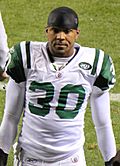
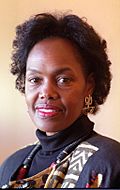

Music
- The Product (rap-duo)
- 11/5, gangsta rap group
- Eric Melvin, guitarist for NOFX
- RBL Posse, gangsta rap group
- Ramirez, punk rapper
- Prezi, rapper
- Cindy Herron, singer and founding member of En Vogue
- Martin Luther McCoy, actor, guitarist and musician
- Larry June, rapper
- Jordan "Stunnaman02" Gomes, rapper and actor
- Marcus Orelias, rapper, actor, and entrepreneur
- Michael Franti, rapper, musician, poet, activist, and singer-songwriter
- Boo Banga, rapper
- Herm, rapper
Film, Theatre, and Television
- Kevin Epps, filmmaker
- Terri J. Vaughn, actress
- Iman Rodney, videographer and Emmy Award winner
- Maria Judice, filmmaker and artist
- André Fenley, sound mixing and sound editor engineer
- Ruth Williams, producer, activist, playwright, and actress. The Bayview Opera House's theatre is named after her.
Sports and Fitness
- Frank "Lefty" O'Doul, professional baseball player
- Jimmy Lester, boxer
- Dion Jordan, professional NFL player
- Desmond Bishop, professional NFL player
- Stevie Johnson, NFL wide receiver
- Eric Wright, NFL player
- Sam Jordan, professional boxer, politician and founder of Sam Jordan's Bar
- Donald Strickland, NFL player
- Maria Kang, fitness advocate and blogger
Medical
- Deundra Hundon, birth worker
- Dr. Arthur H. Coleman, the first Black physician in San Francisco's Bayview-Hunters Point
- Dr. Ahimsa Sumchai, nutritionist, environmental activist, and former gymnast
Education
- Linda Brooks-Burton, librarian, educator, and activist. The main Bayview library is named in her honor.



